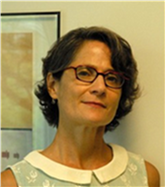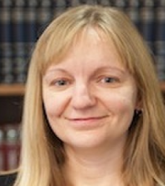Autumn is perpetual summer in South Carolina. Byron Russell was there
I was lucky enough to escape the winter blues here in the UK and travel to Charleston, South Caroline, for the annual Charleston library conference. In addition to participating in the Vendor Day – a showcase of publishers and service providers, including Ingenta and accompanied by Ingenta’s sales, marketing and research arm PCG, this year we ran a highly successful Neapolitan session (not an ice cream, but a semi-plenary) on Open Access metrics.
For the 2017 conference we had a change in venue from the venerable – but rather cramped – Francis Marion Hotel. Plenary sessions, Charleston Neapolitans, and some other sessions were held at the grand new Gaillard Center, a couple of blocks from the Francis Marion. The Center has a performance hall capable of seating 1,800 people and is truly spectacular, plus a grand ballroom which will seat 250. In addition, “salons” cater for smaller sessions. The Charleston Conference was the first conference to be held at the Center, and it’s a good thing because attendance this year was over 1,700, far exceeding the capabilities of the Francis Marion Hotel. (In the past few years, apparently, attendance had to be capped when the limits of the hotel were reached, to the disappointment of some late-registering hopeful attendees). The 2017 Theme was “What’s Past is Prologue” – exploring what the future may or may not hold for librarians and publishers. Plainly the focus was on the situation on the US, but given the number of overseas visitors there was plenty that was universally applicable. Open Access was very much to the fore, with JSTOR’s presentation focusing on the rapid rise in the number of OA eBooks on the platform (from below 1000 in 2016 to 25,000+ by November 17), though they concluded that the awareness of OA books among faculty, students and even librarians remains low – though paradoxically demand is high. This seems to be a common theme; there are many researchers and academics who only have a vague understanding of what open access actually is and means, and among the general public – which should, surely, benefit from open knowledge transmission – awareness of OA is practically non-existent. The OA “movement” really needs to get its marketing act together.
Our own session (Wide Open or Just Ajar? Evaluating Real User Metrics in Open Access) attracted nearly 300 delegates, many latecomers sitting on the floor or standing. This was perhaps unsurprising given the panellists – the head of MIT Press, Amy Brand; the Director of Michigan University Press, Charles Watkinson; and Hillary Corbett, Director, Scholarly Communication & Digital Publishing at Northeastern University. It’s impossible to reproduce or summarise all three presentations here (I am happy to supply all slides on request – mail me at byron.russell@ingenta.com) and slides will be uploaded to Charleston Library Convention site in due course). However, to summarise, each panels spoke on three diverse aspects of a theme – what different stakeholders need from OA metrics.
 Amy Brand: What Publishers need from Open Access metrics
Amy Brand: What Publishers need from Open Access metrics
 Hillary Corbett: What Librarians need from Open Access metrics
Hillary Corbett: What Librarians need from Open Access metrics
Charles Watkinson: What Funders need from Open Access metrics
